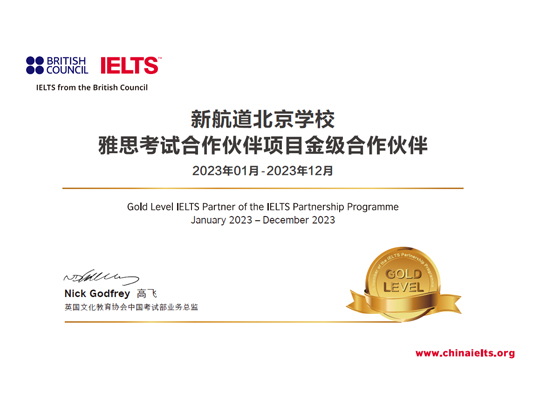当前位置:首页 > 雅思频道 > 雅思写作 > 写雅思写作开头时,如何避免使用模板化的语言?
发布时间:2025-07-02 关键词:雅思写作开头
摘要:在雅思写作中,模板化开头(如 “With the development of...”“Nowadays, people have different opinions about...”)易让考官产生审美疲劳,甚至被判定为「机械套用」。
在雅思写作中,模板化开头(如 “With the development of...”“Nowadays, people have different opinions about...”)易让考官产生审美疲劳,甚至被判定为「机械套用」。
以下从思维重构到语言替换,提供系统性避坑方案,并附对比案例与练习指南:
一、模板化语言的三大特征及破解逻辑
1. 特征:过度抽象的句式
模板案例:"In modern society, the issue of [话题] has become increasingly important."
破解逻辑:用具体场景替代抽象概念,让话题「落地」
优化示例(题目:社交媒体对人际关系的影响):
"When a teenager sends 500 'happy birthday' DMs on Instagram without looking up from their screen, the nature of human connection in the digital age is being redefined."
解析:用「青少年发私信」的场景替代 “modern society”,用 “redefined” 体现动态变化,避免静态描述。
2. 特征:机械对立的观点罗列
模板案例:"Some people think A, while others think B. In my opinion, both have advantages and disadvantages."
破解逻辑:用矛盾现象替代观点对立,展现观察深度
优化示例(题目:是否该限制广告):
"Coca-Cola's 'Share a Coke' campaign generated 25% more sales while promoting 'sharing', yet the same brand's products contribute to global obesity rates—a paradox that highlights advertising's dual role as both economic driver and social influencer."
解析:通过同一品牌的「营销效果」与「社会影响」矛盾,引出深层议题,比单纯罗列观点更具张力。
3. 特征:模糊宽泛的背景铺垫
模板案例:"As we all know, education is very important for personal development."
破解逻辑:用数据锚点 + 限定范围替代模糊表述
优化示例(题目:高等教育是否应免费):
"In Germany, where tuition fees were abolished in 2014, university enrollment increased by 18%, but regional governments now face a €3.2 billion budget shortfall—raising questions about whether free education is a fiscal reality or a political slogan."
解析:用具体国家、数据和预算缺口,将抽象的 “education” 转化为可感知的政策问题。
二、场景化破题:4 类话题的「去模板」开头方案
1. 科技类话题
模板陷阱:"With the rapid development of technology..."
场景方案:用「技术应用冲突」引入
"When a self-driving car must choose between hitting a pedestrian or swerving into a wall, the ethical algorithms of AI become more than a technical issue—they're a test of human morality."(题目:自动驾驶的伦理问题)
2. 环境类话题
模板陷阱:"Environmental pollution is a serious problem..."
场景方案:用「感官描写 + 数据」制造冲击
"In New Delhi, where the air quality index hit 976 in November 2024 (19 times the safe limit), children wear gas masks to school—a reality that blurs the line between environmental policy and public health emergency."(题目:政府是否应负责治污)
3. 教育类话题
模板陷阱:"Education plays a crucial role in..."
场景方案:用「代际对比」突出矛盾
"My grandfather spent 12 years memorizing Latin grammar, while my niece learns coding through VR games—this generational shift in education begs the question: what skills constitute 'literacy' in the 21st century?"(题目:教育内容是否应改变)
4. 社会类话题
模板陷阱:"Nowadays, more and more people..."
场景方案:用「微观案例映射宏观问题」
"A 28-year-old in Tokyo works 80 hours weekly to pay for a 10㎡ apartment, while a retiree in Sweden receives a pension sufficient to travel—this global disparity in work-life balance challenges the notion of 'progress' as a universal concept."(题目:工作满意度的影响因素)
三、语言升级:替代模板词的「表达」工具箱
1. 替代 “some people think” 的学术表达
数据支撑:"A 2023 OECD report indicates that 65% of parents prioritize vocational education..."
专家观点:"Neurologist Dr. Sarah-Jayne Blakemore argues that social media rewires adolescent brains..."
文化现象:"In collectivist cultures like South Korea, the 'education fever' manifests in 78% of students attending after-school academies..."
2. 替代 “important” 的分级词汇
基础性重要:prerequisite, cornerstone(例:Digital literacy is a prerequisite for career advancement.)
紧迫性重要:imperative, pressing necessity(例:Carbon pricing is an environmental imperative.)
战略性重要:linchpin, bedrock(例:Early childhood education is the bedrock of social mobility.)
四、思维训练:3 步构建「非模板」开头
1. 步:拆解题目中的「矛盾点」
题目:是否该禁止塑料袋?
矛盾点:环保需求 vs 生活便利性 vs 经济成本
2. 第二步:寻找「具体载体」落地矛盾
载体选择:用「超市场景 + 数据」
"At a Bangkok supermarket, a plastic bag costs 5 baht (15 cents), yet 82% of customers still pay for them—revealing a paradox: while environmental awareness grows, behavioral change lags behind."
3. 第三步:预埋「论证方向」
句末引导:"This gap between intention and action requires not just bans, but systemic incentives..."(暗示后文将讨论政策设计)
五、避雷清单:5 种高风险模板表达及替代方案
高风险模板 风险原因 替代方案
"As far as I am concerned..." 过度主观,缺乏学术客观性 "This essay will analyze... from an economic and sociological perspective."
"There is no doubt that..." 化表述,不符合学术严谨性 "Compelling evidence suggests that... but counterarguments should not be dismissed."
"In conclusion..."(开头使用) 逻辑混乱,混淆开头与结尾功能 用问题引入:"How can cities balance heritage preservation with urban expansion?"
"Many people believe that..." 模糊主语,缺乏具体支撑 "A 2024 YouGov poll shows 57% of millennials prioritize job flexibility..."
"First of all..."(开头使用) 机械排序,适合说明文而非议论文 用场景引入:"When a student chooses between med school and art college, the debate over 'useful' education begins."
六、实战练习:将模板句转化为场景化表达
模板句:"Nowadays, more and more people are concerned about healthy eating."
题目:政府是否应管控垃圾食品广告?
参考升级:"In the U.S., where 68% of adults are overweight, a child sees an average of 12 fast-food ads daily—this marketing saturation raises questions about whether public health should supersede commercial freedom."
核心逻辑:用「具体国家 + 数据 + 微观现象(儿童看广告)」替代泛泛而谈,同时引出「健康 vs 商业自由」的核心矛盾,为后文论证铺路。
避免模板化的本质是「从抽象到具体」的思维转变:当你能用数据、场景、案例让话题「可触可感」时,语言自然会摆脱模板束缚,同时满足雅思写作对「task response」的评分要求(即深入回应题目)。
新航道-用心用情用力做教育!
400-900-9767

